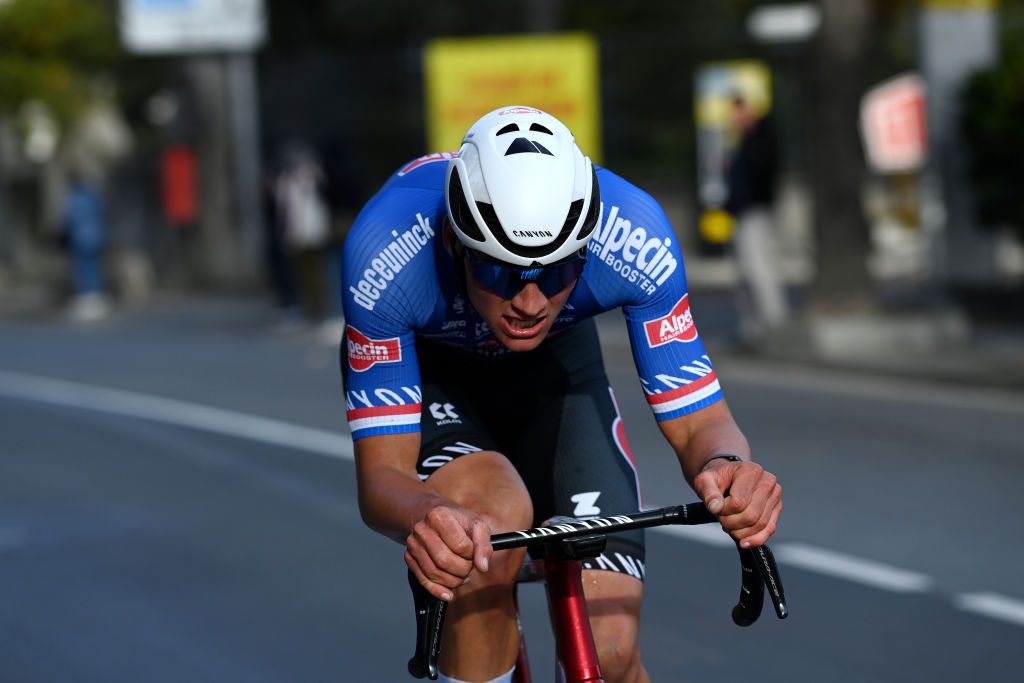Yet again the finale of Milan-San Remo has set a very high bar for the other Monuments to follow, with the 2023 edition holding firm to its habit of delivering drama, tension and suspense.
Mathieu van der Poel, clinched his first-ever Primavera, and the third Monument victory of his career, allowing the Dutchman to carve a space in cycling’s history books as he emulated his grandfather’s win of more than half a century ago. The Alpecin-Deceuninck rider’s spectacular solo victory, however, left Tadej Pogačar (UAE Team Emirates) wondering what might have been after his widely predicted attack on the Poggio ended up being the launchpad for Van der Poel.
The Slovenian, of course, was far from the only rider wishing the race had played out a little differently. The high pace took the sprinters out of contention, and left the race for victory squarely in the hands of the Poggio break of Pogačar, Van der Poel, Filippo Ganna (Ineos Grenadiers) and Wout van Aert (Jumbo-Visma).
That was when the spotlight was emphatically taken by Van der Poel, but of course 294km of racing exposed plenty more than his formidable power on the final climb and seamless descending. Stephen Farrand, who was on the ground in Italy, takes a closer look at the main takeaways from the March 18 race.
Never change Milan-San Remo
Milan-San Remo 2023 was yet another slow burner, a very gradual crescendo of increasing emotions and excitement. There were five hours and 250km of controlled, uneventful racing followed by a fraught final hour and an electrifying final 10 minutes over the Poggio.
La Classicissima is not a race made for television and there’s no easy way to understand its format. The one-way route to San Remo doesn’t include circuits to help sell VIP packages and the best rider might not even win on the Via Roma. But without the near 300km of race distance slowly eating into the peloton’s legs and slowly but inevitably revealing their limitations, Milan-San Remo would just be like any other race.
The Milan-San Remo route has evolved over the years, with Cipressa and the Poggio both added when the sprinters began to dominate. There are also often calls for more climbs to be added to make more of a selection and inspire earlier action.
Though nothing makes a bike race more thrilling than an unpredictable outcome, a result that is balanced on a knife edge and open to a multitude of…
Click Here to Read the Full Original Article at CyclingNews RSS Feed…

